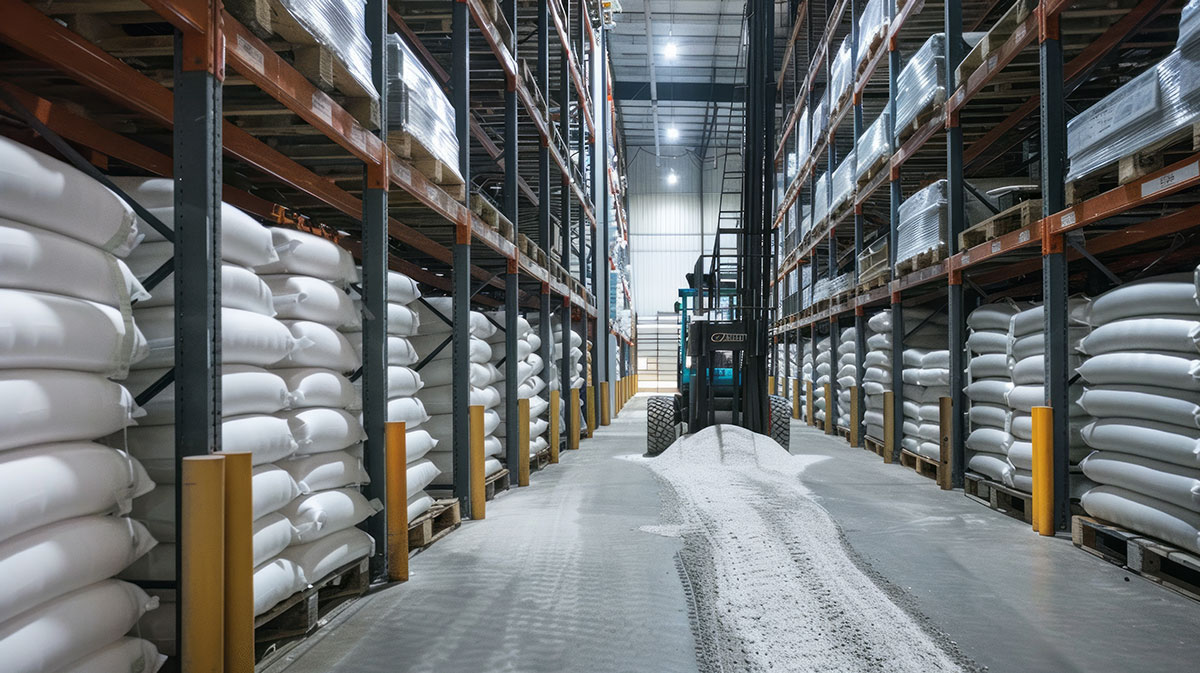
Ever feel like you're wrestling giants? When it comes to bulk materials, that's exactly what it can feel like. From towering silos to overflowing bags, storing and packing these materials efficiently can be a challenge. However, there's nothing you should worry about. Here's your guide to optimizing bulk material storage and packing, turning those industrial titans into your loyal companions.
Know Your Bulk Materials
Before you explore various bulk storage buildings, make sure you understand the nature of bulk materials. These come in a vast array of shapes and sizes, from fine powders to chunky granules. Each type has unique characteristics that influence how you store and pack it. Below are some things to remember:
Flowability
How easily does the material move? Free-flowing materials like sand require less specialized storage than cohesive materials like sticky clays.
Degradation
Does the material deteriorate over time? Materials sensitive to light or moisture need specific storage environments.
Segregation
Does the material separate during handling? Materials with different particle sizes can segregate, impacting consistency.
By understanding these properties, you can choose the most appropriate storage and packing solutions.

Choose the Right Storage Solutions
Now that you've sized up your materials, it's time to pick the perfect storage containers. Here's a comprehensive rundown of popular options to match your needs:
Silos
These giants are ideal for large quantities of dry, free-flowing materials like grain or sand. Silos often come equipped with built-in loading and unloading mechanisms, making them efficient for large-scale operations. Consider investing in weatherproof silos for outdoor storage to protect your materials from the elements.
Hoppers
Similar to silos but smaller, hoppers are funnel-shaped containers that dispense materials through a controlled opening at the bottom. Perfect for metered dispensing of materials onto conveyor belts or into mixing stations. For some hopper applications, you might also consider installing agitators to prevent material bridging (clumping) within the hopper, ensuring a smooth flow during dispensing.
Totes and Drums
These versatile workhorses come in various sizes and materials (plastic, metal) to suit your needs. They're great for storing smaller quantities of bulk materials and offer easy stacking for maximizing storage space. Opt for nesting totes if you have limited space, as they can fit inside each other when empty, saving valuable storage for real estate. Lidded drums provide an extra layer of protection for moisture-sensitive materials or materials prone to spills.
Lightweight Maintenance Enclosures
While not strictly a storage container, a lightweight maintenance enclosure can be a valuable asset for protecting equipment and materials during maintenance or repairs. These portable structures are ideal for field use and provide a temporary work area shielded from the elements. They come in various sizes and can be easily assembled and disassembled for quick deployment.
Selecting the appropriate storage solutions will help you make the most of your available space and maintain material integrity.
Implement Essential Storage Solutions
Once you've chosen your containers, it's time to create a storage strategy that protects your materials and keeps your operation running smoothly.
Pick the Storage Location Wisely
Consider the material's properties when choosing a storage location. For instance, keep moisture-sensitive materials like fertilizer indoors or in covered areas. Likewise, store materials prone to degradation by sunlight away from direct light. Ideally, your storage area should be dry, well-ventilated, and free from pests.
Labeling Like a Boss
Clear and consistent labeling is crucial. Include the material type, weight, date of storage, and any handling instructions. This saves time during retrieval and ensures everyone on the team knows exactly what they're dealing with. Consider using a color-coding system for different material types or hazard levels to add another layer of clarity to your labeling.
Stacking Smarts
Don't turn your storage area into a precarious leaning tower of containers. Follow weight restrictions and stack heavier containers on the bottom tiers. Utilize stacking aids for added stability, especially for bagged materials. Leave sufficient aisle space between stacks to allow for safe and efficient movement of equipment and personnel.
First In, First Out (FIFO)
Implement a FIFO (First In, First Out) system to prevent older materials from getting buried and expiring. This is especially important for perishable or time-sensitive bulk materials. Date labeling your containers becomes even more crucial with a FIFO system. Regularly rotate your stock to ensure the oldest materials are used first.
By following these storage solutions, you'll ensure your materials are well-organized, protected, and easily accessible when needed. This approach not only maximizes efficiency but also extends the lifespan of your materials.

Conclusion
With these steps in mind, you can transform your bulk material storage and packing from a chaotic scramble to a smooth and efficient operation. Remember, well-organized storage systems not only save you time and money but also minimizes the risk of damage and ensures your valuable materials reach their destination in top condition. So, take a deep breath, assess your materials, and start building your optimized bulk material storage empire!






